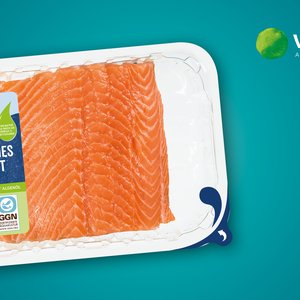Rigid cell walls of microalgae lower the digestibility and nutrient bioavailability in carnivorous fish. Extrusion is a thermo-mechanical process and a scalable technology that may break cell walls and improves nutrient utilization. It can be hypothesized that certain feed additives may further improve microalgae nutrient digestibility and feed utilization by fish.
An international research team performed a study that investigated the effect of the incorporation of 10% pre-extruded Nannochloropsis oceanica on nutrient digestibility, growth and feed utilization of Atlantic salmon post smolts, and the ability of feed additives to improve the feed utilization.
Four low fishmeal feeds were formulated; a control without the microalga N. oceanica (CO), a feed containing 10% of the pre-extruded microalga (NC), and two feeds containing 10% of the pre-extruded microalga and supplemented with either 0.06% Digestarom® (ND) or 1% ZEOFeed (NZ).
The apparent digestibility of dry matter in the NC and NZ groups were significantly higher compared to the control group. The digestibility of lipids was significantly lower and digestibility of ash was higher in the alga-fed groups compared to the control group.
The incorporation of 10% pre-extruded N. oceanica in plant-based commercial-like feeds did not affect the growth, feed utilization and whole-body proximate composition of salmon. No effects of the feed additives were observed on growth, feed utilization and histomorphology of distal intestine of salmon, but cell proliferation was higher for fish fed the algae alone as well as the alga-ZEOfeed combination. There were no differences in polyunsaturated fatty acids in whole body of fish fed the different feeds.
The whole-body EPA + DHA levels of fish fed the algae feeds were maintained at the same levels as fish fed the control feed that contained 50% more fish meal and 10% more fish oil.
Full study available here.













